The aquarium section at your local pet store is surely not the place to go. The large-scale hatcheries that supply fingerlings for recreational fishing in rivers and lakes may not be of much help either. Fortunately, there are more and more small hatcheries that specialize in the needs of backyard aquaculturists setting up shop throughout the country. Here’s our guide.
In some ways, the process of obtaining baby fish to grow into edible-size fish is similar to sourcing chicks, ducklings, or turkey poults. The first step is figuring out which varieties are best suited to your region, the specific conditions in which you’ll raise them, and to your personal preferences. As with other baby livestock, fish fry are often available from mail order suppliers that will overnight them to your doorstep.
That’s where the similarities end, however. For one, fish hatcheries with a good selection of fish suitable for homesteaders are tricky to find. There are also a lot of rules regulating both the shipping and cultivation of different species of fish, which vary from state to state and may limit your options – check with local authorities to learn more.
There’s also a lot that can go wrong when transporting fish from one body of water to another – especially over vast distances. Fingerling size fish (1 to 4 inches) fair poorly in the mail and are expensive to ship, though you may be able to pick them up in person – just be prepared with an aerated tank of water to bring them home in (tiny 12-volt aerators are available that are designed to run off your car or truck battery). Ordering fry (less than 1 inch in size), which are shipped in bags with enough oxygen to last through their journey, is more cost effective. Here’s a selection of the best mail order hatcheries for backyard aquaculture.
After deciding which kind of fish to get, you need to decide how many. The holy grail of commercial aquaculture is one pound of live fish per gallon of water. However, achieving this incredibly dense stocking rate is extremely difficult without state-of-the-art equipment to maintain water quality – and a lot of practical experience.
A good ratio for your first season of raising fish is one pound per 10 gallons of water. Thus, if you have a 1000-gallon tank and you plan to harvest the fish once they reach one pound (a typical harvest size), order 100 fish. After you’ve gotten the hang of maintaining water quality for a season or two, work you way up to higher stocking rates.
Your aquaculture system needs to be fully operational prior to their arrival, with a tank of dechlorinated water and a functioning aeration and filtration system. You’ll also need fingerling food, which you can grind into a powder to feed fry until they grow up a bit. Here’s a handy source for organic fish food.
In order not to shock them, prepare a small transition tank where you gradually acclimate the fish to their new environment by adding a bit of the tank water to the water they came in every 20 minutes until they are swimming in a mixture that’s about half of each before you dump them into the main tank.
Many aquaculturists add salt (4 to 5 teaspoons per gallon of water) to the transition tank, which helps remove any parasites the new fish might be carrying, and also helps rejuvenate fish that might be suffering from the journey. Ordinary, non-iodized table salt works perfectly. Also, be sure to remove any dead or noticeably diseased fish before releasing them into their new home.
Blue Nile TilapiaThis hybrid, sometimes sold under the name Rocky Mountain White tilapia, is one of the most popular varieties for small scale aquaculture systems. They are fast-growing, disease-resistant, tolerant of poor water conditions, very tasty, and quite beautiful.
Other TilapiaThere are various colors of tilapia to choose from (gray, gold, orange), though this refers to the scales, not the flesh. Other than that, the differences between them are relatively minor. Note that certain tilapia varieties are restricted in states where they are considered an invasive species.
CatfishThese bottom feeders are super tough and adapt to a wide range of water conditions. Some people object to the strong flavor, but like other aspects Southern cuisine, catfish is having a bit of a moment – the key is how you season it.
PerchThere are a variety of perch suitable for small scale aquaculture, though yellow perch, a native of the Great Lakes, is the most common. They grow faster than most other perch, but still not as fast as tilapia. Unlike tilapia, perch thrive in cool water, and can overwinter outdoors in cold climates.
CarpThough not a popular dinner item in North America, carp are one of the most widely consumed fish throughout the world. They are extremely tough, fast-growing, and help to maintain good water quality in your tanks. Check local regulations as certain varieties of carp are considered invasive in many states – that doesn’t necessarily mean you can’t raise them, but you might need a special permit to verify that you’re keeping them in a way that prevents them from escaping into the wild.
Hybrid Striped BassIt’s possible to raise other types of bass in small scale aquaculture systems, but this is the only variety commonly used, as it has been bred for such conditions, and is much hardier, adaptable and fast-growing compared to the various wild bass species. It also has a milder flavor than wild bass, and has become quite common in North American grocery stores.
TroutTrout grow slowly and are a bit temperamental to raise, but their excellent flavor may be worth the time investment needed to learn how to raise them successfully. They’re tricky: Not only do they require cool temperatures, which can be hard to provide in summer in a small-scale tank system, but water quality needs to be top notch, too.
SalmonSalmon have similar requirements as trout, but are even more sensitive to poor water quality. An added complexity is that they are typically raised from eggs, rather than fry or fingerlings, which requires a bit more technical knowledge to pull off.
2. Fill the Pond With Water
Grab your hose and fill that hole with water. After you’ve filled it to the brim, leave it alone for a minimum of one week. This will allow any chlorine or other additives to evaporate. Furthermore, the mud and silt that have been stirred up from the bottom and sides will have time to settle.
Planting some water-loving species around the edge at this point is a good idea.
Plants are essential for adding oxygen to the water and giving your fish shade and cover. Naturally, the species you choose will depend on both where you live and the species you’re farming. The following are generally excellent all-purpose fish pond plants:
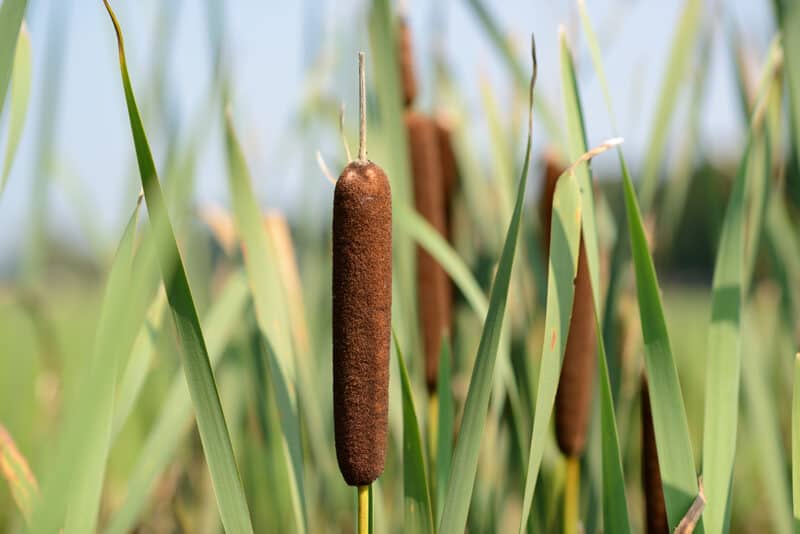
- Hornwort (Ceratophyllum demersum) : ideal for filtering pond water
- Water lilies (Nymphaeaceae spp. ): great for offering cover and shade; pick a species native to your region.
- Water lettuce (Pistia spp.): absorbs waste well, provides decent shade
- Cattails (Typha spp. ): some of the best water purifiers out there.
- Water hyacinth (Pontederia crassipes): incredible for wastewater treatment
- Duckweed (Lemna spp.): great for both filtering and cover/shade
For more options, check out our guide.
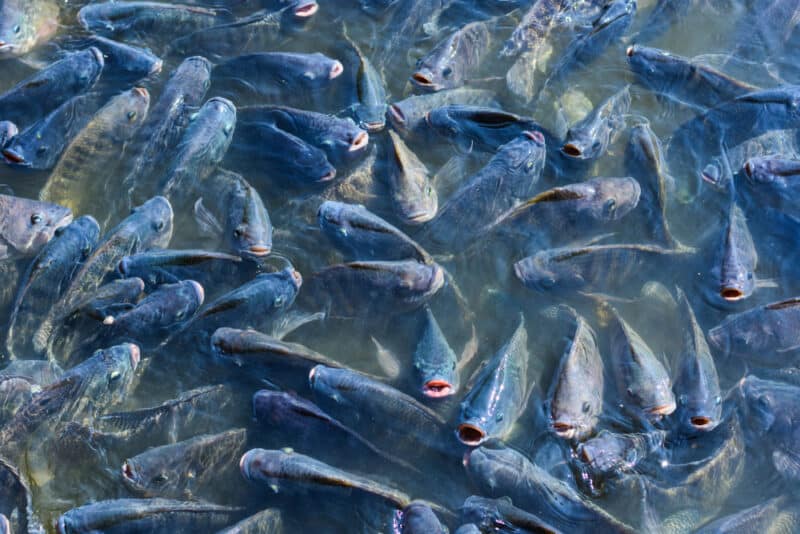
We’ll go into more detail about the easiest fish to farm because they require the least amount of upkeep in a separate guide. Though fish lower on the food chain are less expensive to raise, tilapia and koi are generally good choices.
Catfish, for example, require just one pound of food to yield one pound of edible flesh. However, it takes up to five pounds of food for a carnivorous fish, such as salmon, to produce one pound of flesh.
Start small with only 10 to 20 fish. In this manner, you can ascertain whether their surroundings are conducive to their needs or require modification. You’ll know you still have a lot of work to do on that pond before it’s ready to support life if they all pass away in a week.
Initially, you will need to feed the fish because the ecosystem won’t be fully formed. Fish generally eat 2-3% of their body weight every day. Therefore, feeding them a few times a day is ideal, especially if a large number of them are begging for food at the same time.
Remember that there will be fish deaths there. This could be because of old age, disease, trauma, or just the fact that it was their time to pass away. Leave them in the pond when they do so because their decaying remains will support and enhance that ecosystem.
A Note on Floating Fish Cages
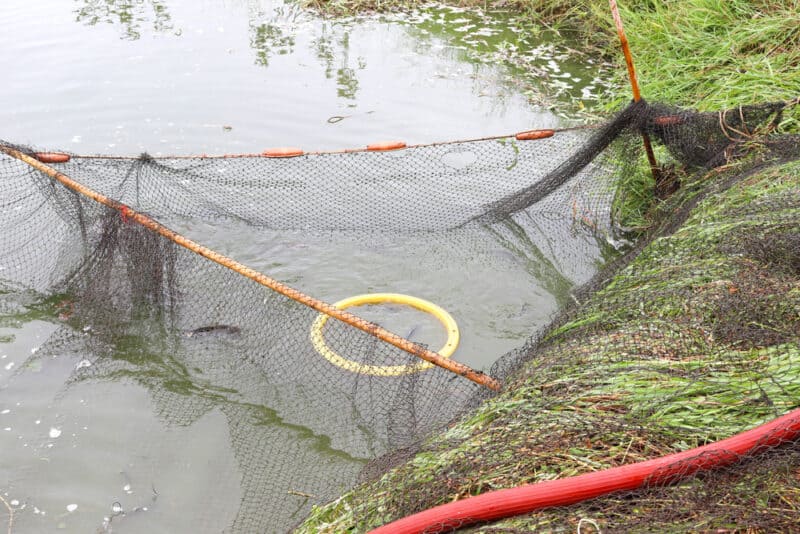
Whether you choose to create a floating cage system or allow your fish to swim freely around the pond is entirely up to you. There are pros and cons to both.
Your fish will be easily contained in floating nets with a cage system. They will still be able to swim around to some extent, but once they have grown, collecting them will be much simpler. Their limited area means they won’t expend as much energy swimming around the pond. They will grow faster as a result, making them ready for consumption sooner.
The drawback of this is that the fish do not enjoy it, as you can imagine. It resembles confining hens to tiny, cramped cages where they are unable to fly or move.
Hens on a free range, able to forage for insects and having lots of space to run around, make much happier pets. Similarly, even though we raise fish for food, that doesn’t mean we have to cause them pain or suffering in the process.
Furthermore, frequent cleaning of these cages is required. They gather filamentous algae within them, along with fragments of deceased fish. In an open pond, everything is well-balanced and self-sustaining.
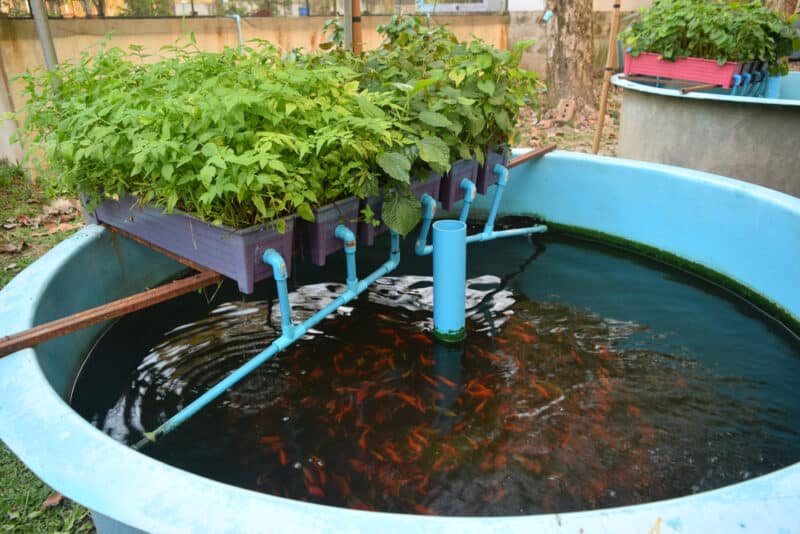
If you would like to raise fish in your backyard but don’t want a pond, you might want to think about setting up an aquaponics system. This allows you to cultivate two or more food sources in one area, which increases productivity on your homestead.
Simply put, an aquaponics system consists of hydroponically growing plants over fish-raising tanks or pools. By feeding on the nutrients that the fish excrete (poop), the plants filter the water and clean it.
Consequently, the fish gain from the plants’ release of oxygen into their water as well as a cleaner environment.
Additionally, the fish may be shielded from possible predators based on the kind of plants you’re growing.
4. Add Additional Life Into (and Around) Your Pond
Anybody who has ever watched a pond will likely have noticed that it was brimming with life. There would have been abundant plants (e. g. , those listed earlier), as well as insects and amphibians.
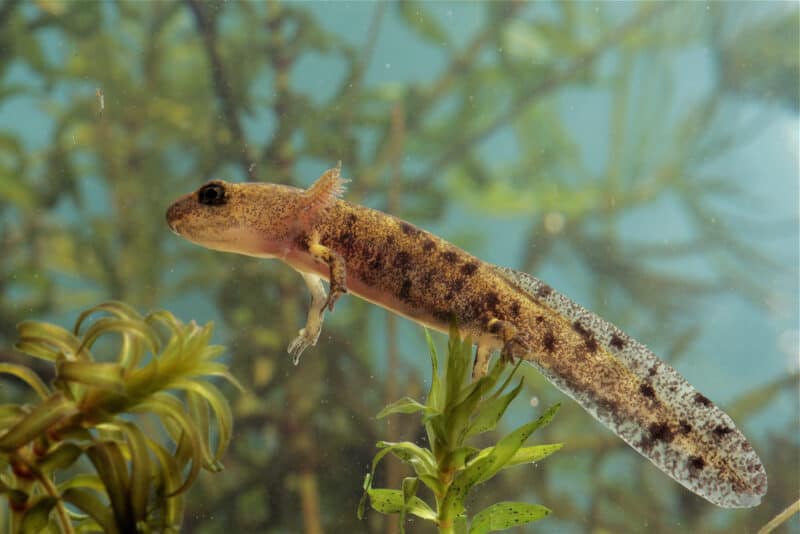
Don’t forget to add plants that thrive in water to the area surrounding your pond. These will give insects, amphibians, and birds the habitat and food they need to stay in good health, which is essential for maintaining a pond.
See our article on plants that grow well in damp soil here, and learn more about the species that are most successful in your region.
These plants ought to draw healthy insect and amphibian species to your pond. Depending on your region, these could include salamanders, frogs, newts, and small snakes. These kinds of animals will support the health of your pond by helping to control insect populations.
We brought salamanders and frogs from adjacent wooded areas to our property, and they have flourished in the wetlands here.
You can also take this route if you observe a lack of these species in the area surrounding your own pond. But generally speaking, we advise waiting it out; if and when you build it, they will arrive when the time is appropriate.
FAQ
What is the easiest fish to farm?
Can you farm your own fish to eat?
Is it possible to farm fish?